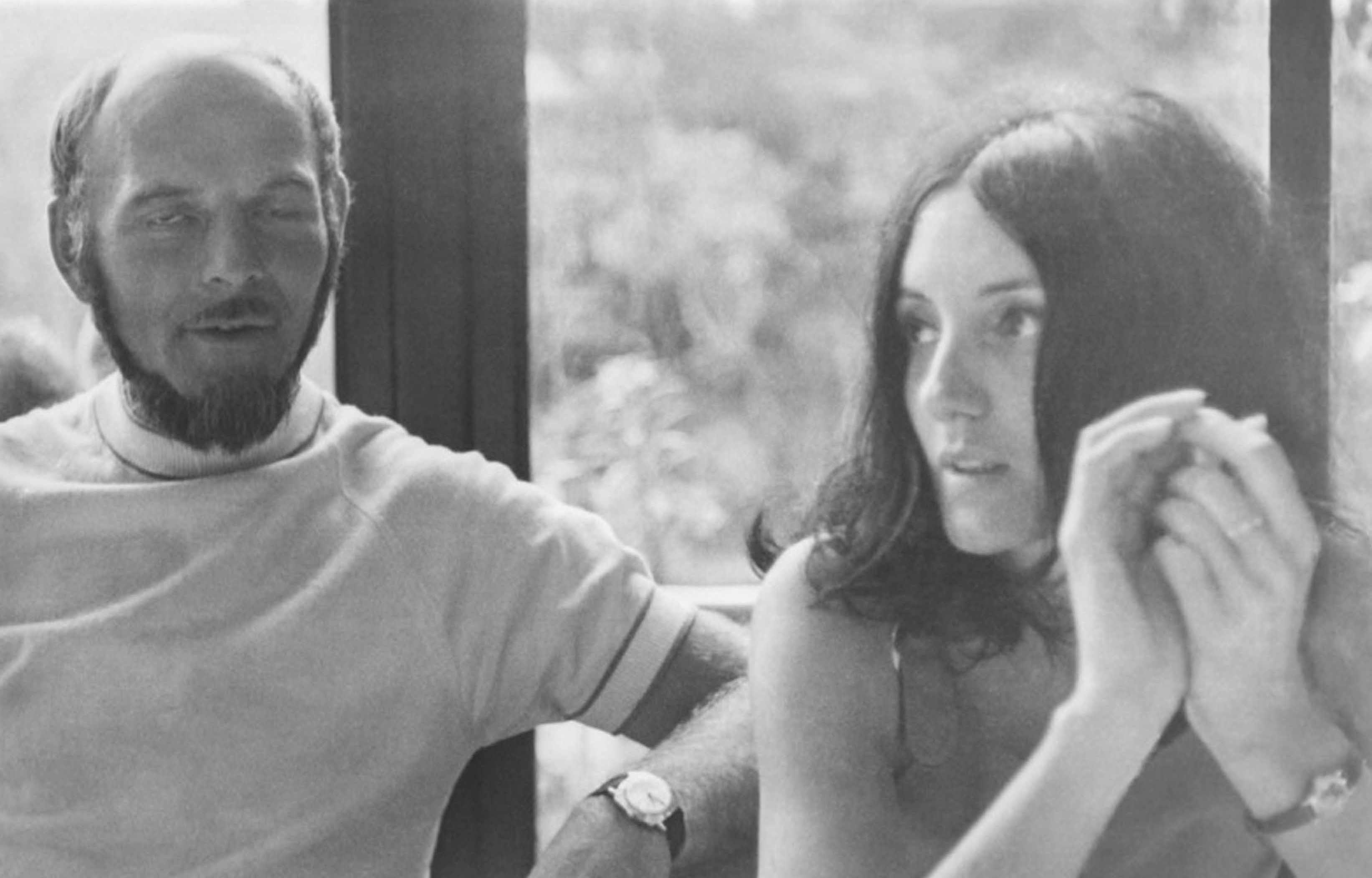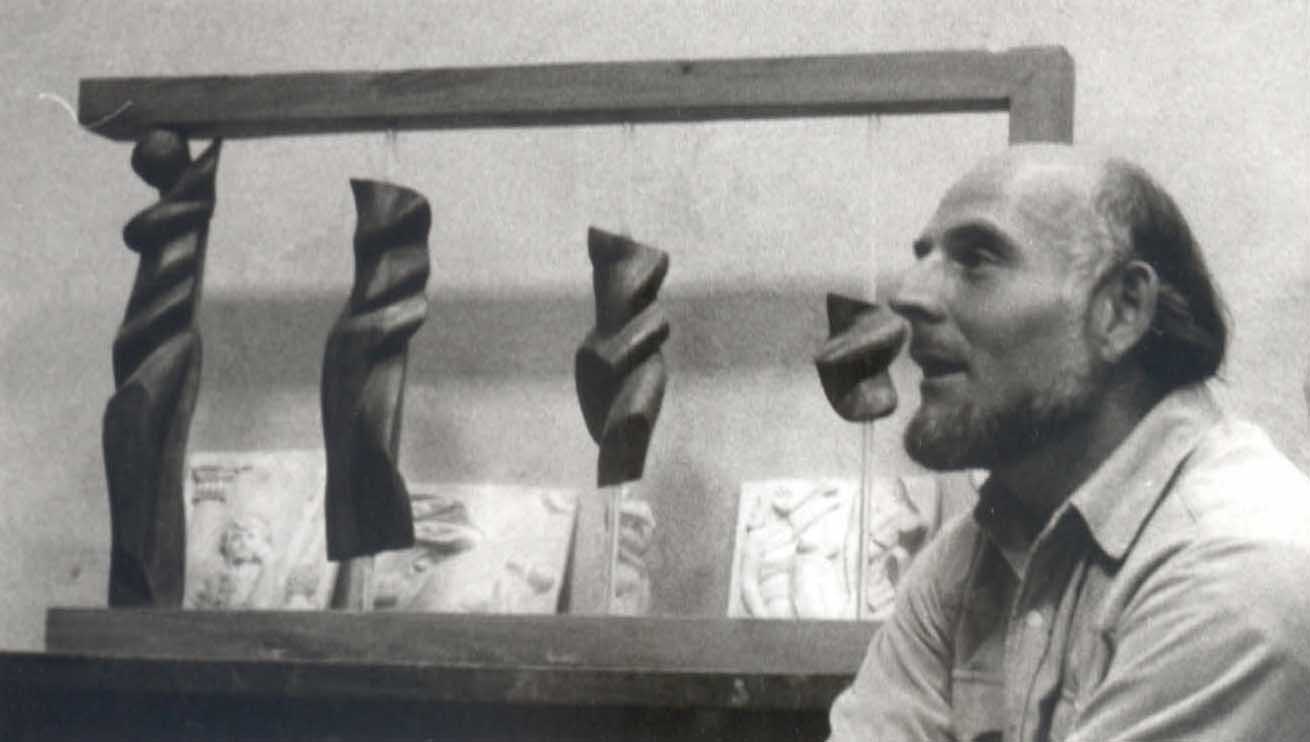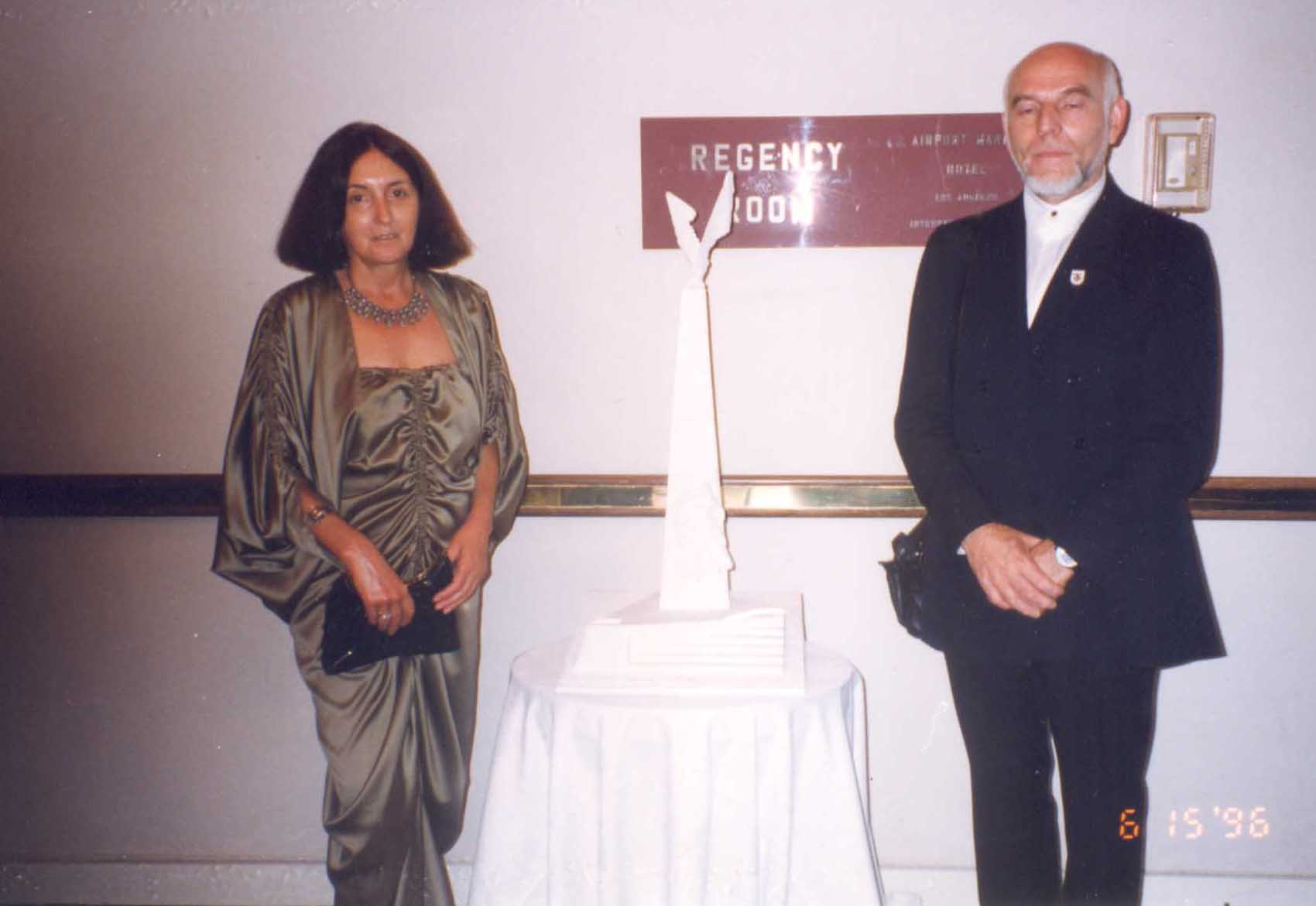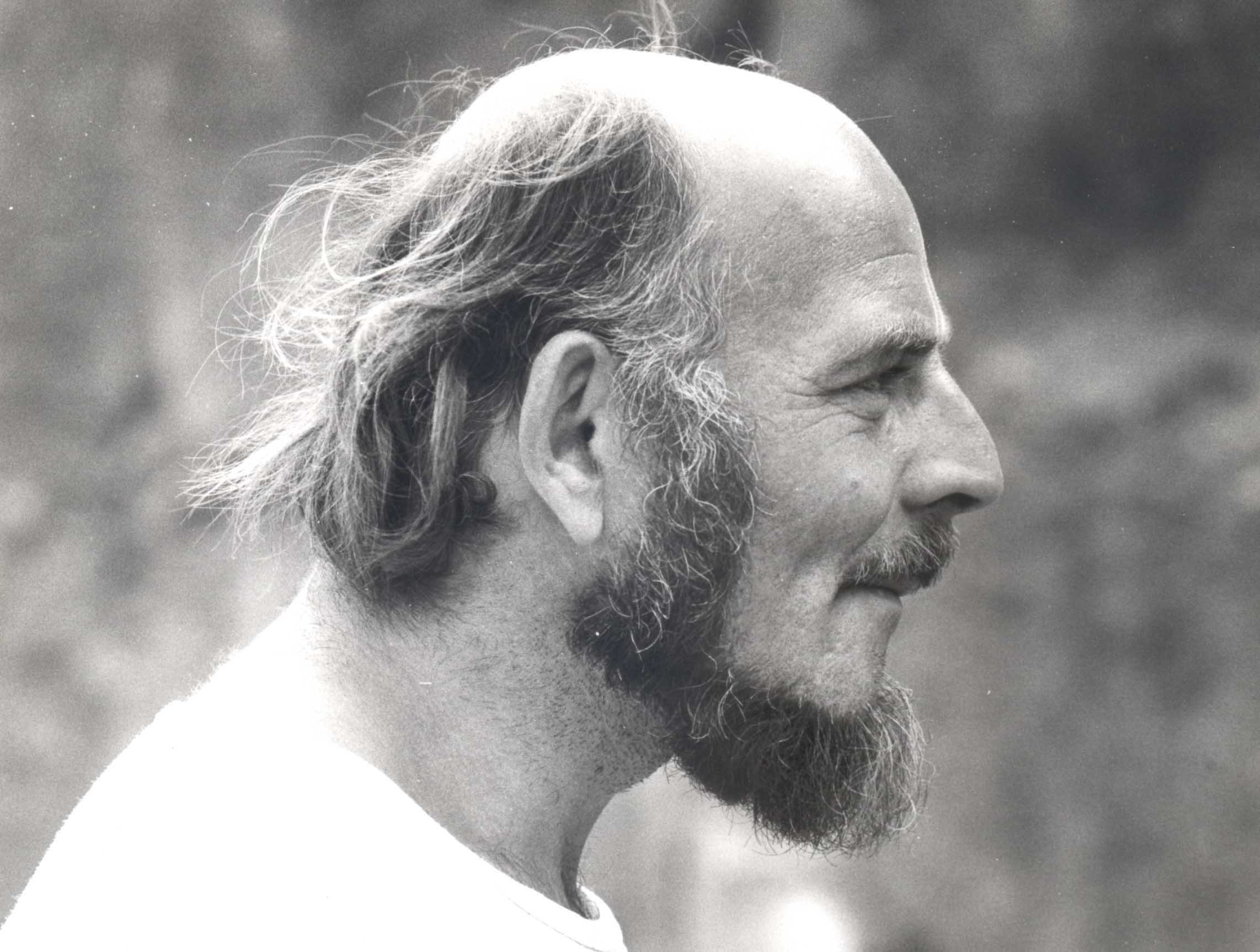Main events in the creative career of Károly Ócsai

(Compiled by Dr Náda Neducza, trustee of the artist’s legacy)
Károly Ócsay was born in Újpest [today a district in Budapest] in 1938. He studied painting between 1952 and 1954 with Lajos Szentiványi in the Vasas Art Circle, and from 1954 to 1955 he was a pupil in Dezső Bokros-Birman’s studio. He studied sculpture between 1955 and 1957 at the Arts and Crafts Secondary School under József Somogyi. Because of his participation in the 1956 uprising he was not allowed to go on to the Academy of Fine Arts. He tried jobs that would help his professional development. Between 1960 and 1963 he worked as a ceramic artist and a restorer at the Fine Arts Manufacturing Company; he was exhibition organizer at the Museum Information Centre between 1964 and 1972. In 1963–1964 he was allowed to enter higher education and he studied at the Debrecen Teacher Training College.
After his first solo show in 1967 he was admitted to professional art organisations including the Association of Young Artists (1968) and the Art Fund of the Hungarian People’s Republic, as well as its successor, the National Association of Hungarian Creative Artists. From the 1970s onwards he regularly contributed to major group exhibitions of contemporary Hungarian art. He received numerous invitations to national and international symposia. In 1982 he became a member of the Association of Hungarian Fine and Applied Artists, and later FIDEM. Between 1986 and 1996 he taught sculpture at the Kálmán Nádasdy School of Art.
Thanks to the change of the political and social system in Hungary after 1989, some of his works were erected in public spaces. He was a member of Budafok local council between 1990 and 1994, and vice-chairman of the Cultural Committee. He was a member of the Society of Hungarian Scupltors from 1990. He joined the Pál Szinyei Merse Society in 1992 and the Sculptural Drawing Society in 1996. Between 1990 and 2003 he and his wife Dr Náda Neducza organised the biennals and symposia of sculptural drawing (1–7).

AWARDS, GRANTS:
Derkovits grant, 1972
“Kosztolányi Grant and exhibition” Award of the Cultural Ministry (1985)
“Long live the trees” 2nd prize National Environmental Competition (1987)
Pécs Graphic Workshop Award (1989)
“1st National Biennial of Sculptural Drawing” Award of the Hungarian Institute for Culture and Art (1990)
“2nd International Biennial of Sculptural Drawing” Award of the Budapest Municipal Government (1992)
“National 1956 Memorial Competition” Szeged Munucipal County Council Award (1995)
“National Attila József Sepulchral Monument Competition” Award of the Hungarian Institute for Culture and Art (1995)
“Head or Tails” Award of the Polgári Bank (1996)
National Association of Hungarian Creative Artists grant (1998)
“Onion and Man” (Makó) Prize of the Hungarian Institute for Culture and Art (1998)
“5th National Biennial of Sculptural Drawing” Award of the Hungarian Society of Sculptors, 1998
Grand Prix of the National Association of Hungarian Creative Artists, 2000
“National 3D sculptural competition” award for the main square of Kecskemét / “Kecskebéka” [Toad] 1st Prize, 2008
Awards for his work in art education:
1988 Cultural Ministry Merit Award and honours of the Association of Hungarian Fine and Applied Artists
1988, 1990, 1994: award of the National Pedagogical Institute
DECORATIONS:
National Defence Medal, 3rd degree (2000)
1956 medal from President of the Republic of Hungary (2002)
Munkácsy Award (2003)
Pro Fidaelia I medal from the 1956 Memorial Society (2006)
WORKS IN PUBLIC SPACES:
Mannequin (1973), marble, 220 cm, (Prilep / Macedonia, Sculpture Park)
Columns (1975), stone, 340 cm (Lindabrunn / Austria, Sculpture Park) Portrait of Ferenc Rákóczi II (1978), limestone, 70 cm (Ferenc Rákóczi II Grammar School, Vásárosnamény)
Portrait of Ferenc Móra (1980), Vraca stone, 70 cm (Park of Cultural Centre, Ruzsa)
Portrait of Attila József (1981), bronze, oak, 220 cm (Primary School, Pusztaszabolcs) – providence unknown
Saturnalia (1981–1982), limestone, travertine, 70×450×450 cm (Sculpture Park, Villány)
Sepulchral monument of Mrs Atilla Vértes (1984), marble, 190×90 cm (Budapest, Farkasrét Cemetery)
Relief/street sign for Tihamér Vujicsics (1985), glazed ceramic, 60×43 cm (Máriagyüd)
Feeling of want (1986), Süttő limestone, 210 cm (HUNGAROVIN, Budapest)
Sepulchral monument of Neducsin Dobrinka (1987), artificial stone, 190×90 cm (Battonya)
Lajos Kossuth (1993), bronze relief, 70×100 cm (Lajos Kossuth Primary School, Budafok)
Memorial of Csata Tétényi (home guard; 1996), Süttő limestone, 500 cm (Nagytétény Palace Park, Budapest)
Tabán 1956 Memorial (1996-2001), Süttő limestone, 1650 cm (Budapest)
Diary fragment – 1956 memorial (2006), Süttő limestone, 100×200×200 cm (Süttő, Áprily tér)
WORKS IN PUBLIC BUILDINGS:
Solitude I (1973), lead, 26 cm / Solitude II. (1975), lead, 28 cm (Cultural Ministry, Budapest)
Portrait/tile of Ervin Baktay (1975), wood, 96×48×10 cm (Baktay Ervin Grammar School, Dunaharaszti)
Procession (1981), bronze, 36 cm (Gábor Klauzál Cultural Centre, Budapest)
Portrait of Tihamér Vujicsics (1985), walnut, 45×35 cm (Music School, Szentendre)
Left thief (1986), bronze, 26 cm (Béla Vikár Cultural Centre, Balatonlelle)
Attila József: Elegy (1990), aluminium relief, 300×350 cm (Centre for Psychotherapy Methodology, Budapest) – providence unknown
Feast of Matthias (2004), relief in tinted silicate and chamotte, 198×243 cm (Suburban Catholic Primary School – former Mátyás Corvin School of Catering, Hódmezővásárhely)
WORKS IN PUBLIC COLLECTIONS:
By the Danube (1972), lead cover, 250×150 cm (Rippl-Rónai Museum, Kaposvár)
Meeting (1973), wood relief, 70×70 cm (City Museum, Prilep / Macedonia)
Mama (1976), relief, foamed cement, 150×150 cm (Gát utca Attila József Museum, Budapest) – providence unknown
Portrait and wood panel of Dániel Berzsenyi (1975), wood, 300×300 cm (Berzsenyi Museum, Nikla)
Vilmos Tauffer bronze medal (1978), diameter: 8 cm (Semmelweis Museum of Medical History, Budapest)
Medal of Picasso, Braque and Giacometti (1978), bronze, diameter: 8 cm (Numismatic Collectors’ Society, Bonn)
Ceramic works made in the workshop (Siklósi Creative Workshop Collection)
The Lost Rider 1–2. (1982) bronze medal, diameter: 12 cm (Modern Picture Gallery, Pécs)
Tivadar Csontváry Kosztka (1984), bronze medal, diameter: 12 cm (Csontváry Museum, Pécs)
The difficulties of resurrection I (washed chalk on paper, 70×50 cm), Emanation 1–3 (pencil, watercolour on paper, 70×50 cm), Gates of the Soul (charcoal on card, 100×70 cm) (Winners of the Sculptural Drawing Biennial 2010, Hungarian National Gallery, Budapest)
The Lost Rider 1 (bronze, diameter: 8 cm), Atlantis 3 (bronze, diameter: 12 cm), Fourier: Geometry of Passions 4 (bronze, diameter: 12 cm), Attractions (binding and releasing) 4–5 (bronze, diameter: 12 cm) (2013, Hungarian National Gallery, Budapest)
Kassák (before 1977), bronze medal, diameter: 7.9 cm; In memory of the Csokonai Table (1989), bronze medal, diameter: 8.6 cm (Petőfi Irodalmi Múzeum)
Flag with a hole 1 (plaster, 61.5×62×46 cm), Flag with a hole (Indian ink on paper, 70×50 cm), Flag with a hole 2 (card, 25×9×24 cm), Book of Popular Uprisings 1 (plaster, 47×24×85 cm), Book of Popular Uprisings 2 (plaster, 33×17×39 cm), models for the Tabán memorial (plaster, 12×9×77 cm, plaster, 24×19×149 cm), models for the relief of the Tabán memorial (plaster, 21×21×60 cm, plaster, 38×9×51 cm), drawings of the Tabán memorial (charcoal/chalk, 43.3×61.6), Diary fragment (plaster, 40×28×41 cm), Flame of Revolution (wire and paper, 26×22×53 cm), Gergely Pongrátz commemorative medal design 1–2 (aluminium embossing, diameter: 10 cm), Kati Magyar commemorative medal design 1–3 (aluminium embossing, diameter: 10 cm) (works and documents on the 1956 theme, 2014, Terror House Museum)
RESTORATIONS, RECONSTRUCTIONS:
1967: “Crossing the Szivas” / decorative 3D sculpture – Műcsarnok (Budapest)
1967: “Diorama” (Budapest History Museum – Pesterzsébet Museum)
1968: Reconstruction of the Dominican monastery on Margaret Island / model (Budapest History Museum)
1970: Dezső Bokros Birman: Wounded soldier / copy of an artwork (Hungarian Television)
1986: Restoring the Pesthidegkút devotional column with Ágnes Péter
1986: Residence of the Ambassador of the USA to Hungary, reconstruction with Ágnes Péter and Gábor Gáti (Budapest 12th district, Óra u. 22.)





